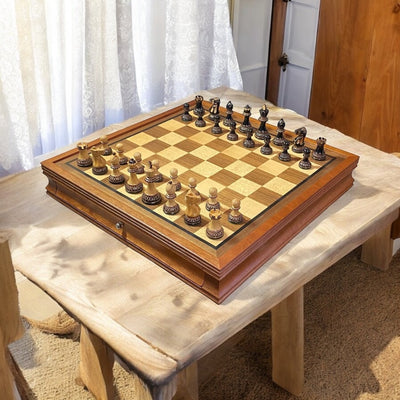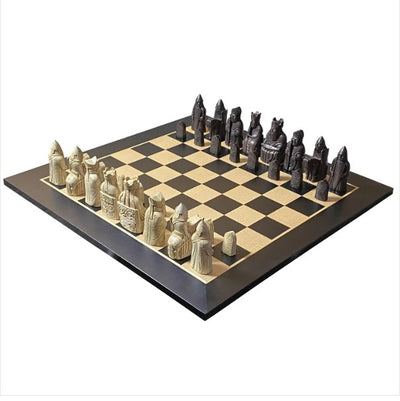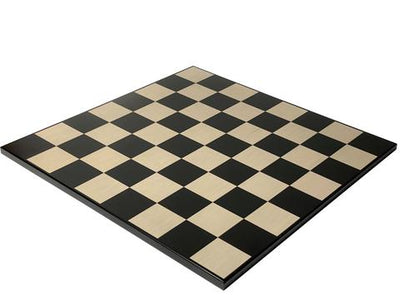10 Most Important Chess Openings Every Player Should Know
The 10 Most Important Chess Openings Every Player Should Know
One of the most exciting parts of chess is mastering the opening — the first few moves that can shape the entire game. The right opening can give you a strong position, quick development, and a strategic advantage.
But with thousands of variations out there, where should you start? Whether you’re new to chess or looking to sharpen your skills, these are the 10 most important chess openings every player should know.
These classics stand the test of time and appear again and again — in casual games, online blitz, and even world championships. Let’s dive in.
1. Ruy López (Spanish Opening)
Moves: 1. e4 e5 2. Nf3 Nc6 3. Bb5
One of the oldest and most respected openings in chess. The Spanish Opening controls the center and puts early pressure on Black’s knight.
Why it matters:
-
Builds central control
-
A springboard for countless middle-game plans
-
Regularly used by world champions
Tip: Learn the main lines first — like the Morphy Defense — before exploring deeper variations.
2. Sicilian Defense
Moves: 1. e4 c5
The most popular and aggressive response to 1.e4 at all levels. The Sicilian immediately fights for central space from the wing.
Why it matters:
-
Creates sharp, tactical games
-
Used by attacking players to fight for the win
-
Many sub-variations: Najdorf, Dragon, Accelerated Dragon, and more
Tip: Beginners should start with the open Sicilian before tackling the more complex variations.
3. Queen’s Gambit
Moves: 1. d4 d5 2. c4
A timeless opening — the “Queen’s Gambit” became a household name after the popular Netflix series The Queen’s Gambit — but it’s been a staple in master-level chess for over a century.
Why it matters:
-
Establishes central tension
-
Offers positional advantages
-
Used by many positional and strategic players
Tip: Understanding the Queen’s Gambit Declined and Accepted helps you handle both sides.
4. King’s Indian Defense
Moves: 1. d4 Nf6 2. c4 g6 3. Nc3 Bg7
A hypermodern opening where Black allows White to take the center, planning to strike back later.
Why it matters:
-
Leads to rich, complex middlegames
-
Excellent weapon for players who enjoy dynamic counterplay
-
Played by champions like Garry Kasparov
Tip: Know key ideas — not just moves — in the King’s Indian (pawn storms, king-side attacks).
5. Italian Game
Moves: 1. e4 e5 2. Nf3 Nc6 3. Bc4
A beginner-friendly and very classical opening. The Italian Game focuses on fast development and controlling the center.
Why it matters:
-
Teaches good opening principles
-
Easy to understand and play
-
Good for all levels, from beginners to experts
Tip: Understand both the main lines (Giuoco Piano) and tactical options (Evans Gambit).
6. French Defense
Moves: 1. e4 e6
An ultra-solid defense for Black, challenging White’s center with d5 on the next move.
Why it matters:
-
Very solid but dynamic
-
Creates long-term strategic battles
-
Favored by positional players
Tip: Learn key pawn structures — especially blocked positions and counter-play themes.
7. Caro-Kann Defense
Moves: 1. e4 c6
The Caro-Kann is another rock-solid choice for Black. Unlike the Sicilian, it avoids the sharpest tactical duels and provides safe, strategic play.
Why it matters:
-
Excellent choice for players who prefer a solid game
-
Trusted by champions like Anatoly Karpov
-
Builds strong pawn chains and control
Tip: Focus on piece development — the Caro-Kann often leads to long, maneuvering games.
8. London System
Moves: 1. d4 and then Bf4 (or Nf3, e3, c3)
The London System is flexible, safe, and easy to learn — extremely popular in online chess.
Why it matters:
-
Great for club players and rapid games
-
Simple move order that avoids sharp theoretical duels
-
Builds a strong central position
Tip: Develop naturally — don’t be afraid to try different move orders.
9. Scotch Game
Moves: 1. e4 e5 2. Nf3 Nc6 3. d4
A very direct opening that immediately opens the center for tactical possibilities.
Why it matters:
-
Great for learning tactics and initiative
-
Leads to open, exciting games
-
Good for faster time controls
Tip: Study common traps — both to use and to avoid!
10. English Opening
Moves: 1. c4
A flexible flank opening. The English lets White avoid mainline d4 or e4 openings while developing solid control.
Why it matters:
-
Flexible and strategic
-
Popular with positional players
-
Less theoretical than some 1.e4 or 1.d4 systems
Tip: Learn common setups — often transposes into other openings (like the Catalan or Queen’s Gambit).
Why Openings Matter
For beginners, it’s tempting to memorize tons of opening moves — but that’s not the goal. The true value of studying these 10 openings is that they teach key principles:
✅ Central control
✅ Fast piece development
✅ King safety
✅ Strategic planning
By mastering these fundamentals, you’ll naturally improve your play — in all phases of the game.
How to Learn Openings the Right Way
Here’s a simple approach for players at any level:
-
Start with 1 or 2 openings as White
(Example: Queen’s Gambit and Italian Game) -
Choose 1 or 2 defenses as Black
(Example: Sicilian vs e4 and King’s Indian vs d4) -
Understand ideas, not just memorized moves
(Why play a move? What’s the plan?) -
Review master games
Study how top players handle these openings. -
Play and practice
The more games you play, the more comfortable you’ll feel.






